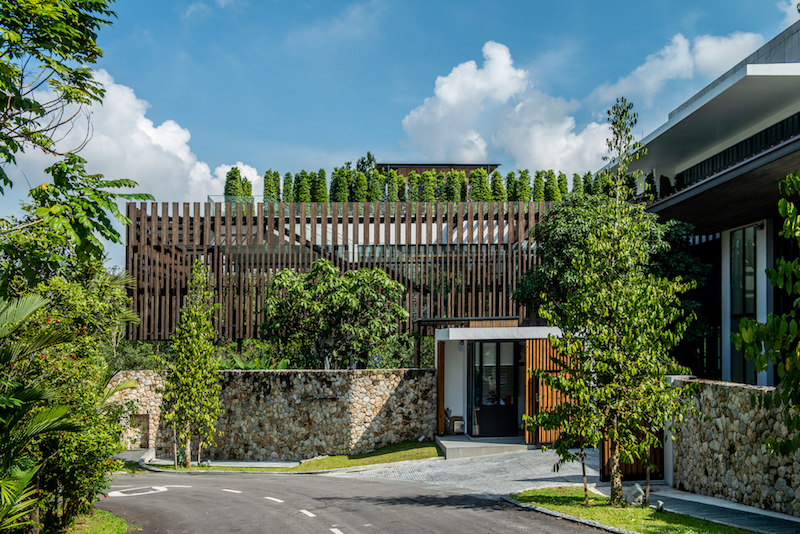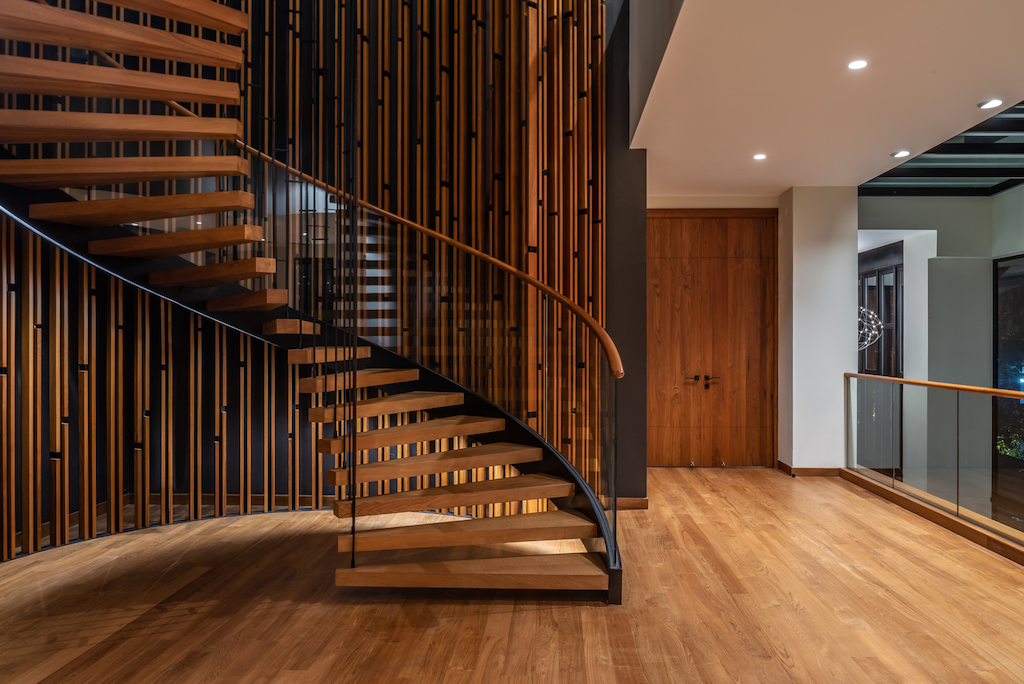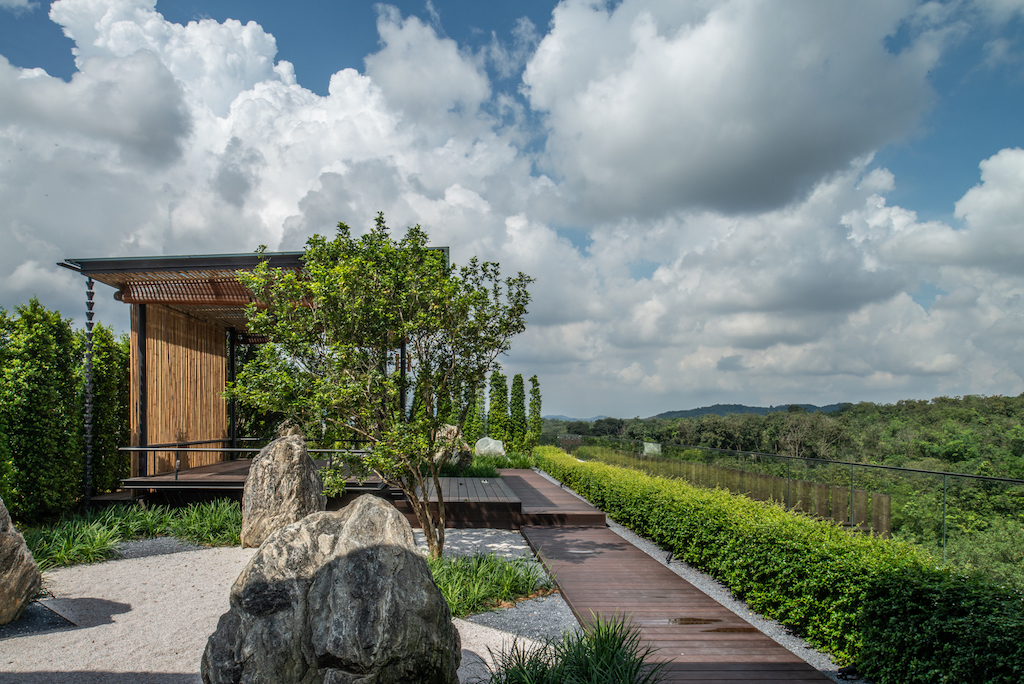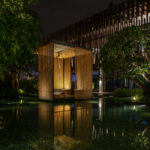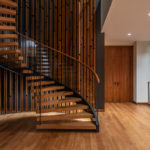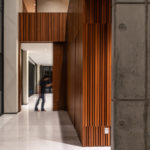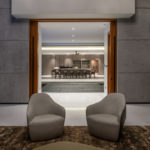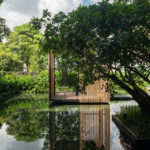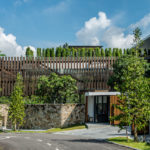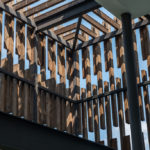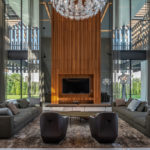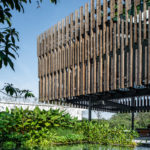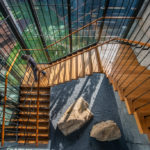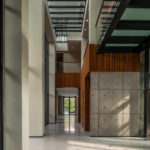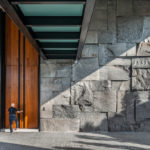Petaling Jaya-based practice Design Collective Architects, led by architects Chan Mun Inn, David Chan, and Quah Zheng Wei, has designed a 2,146m² private family residence in Malaysia’s Selangor state. The house is designed as a series of modern pavilions connected by large open terraces and water gardens.
Each pavilion differs in programme and allows for the large home to be sectioned into different areas: guest pavilion, entertainment pavilion, living pavilion, and service pavilion. Each of these pavilions is independent and can be sectioned and closed off when not in use. This flexibility allows for the house to adapt to the changing needs of the growing family, which was one of the main requirements in the design brief. The interior architecture was helmed by Essential Design Integrated designers Wong Pei San and Cherry Chung, while the landscape was designed by Inchscape.
The actual members of the family that will be living here on a daily basis will change when their children leave home for studies. Responding to this, the idea of separate components in the form of pavilions is designed into the home, allowing sections to be shut-off when not in use. For the form itself, basic fundamentals of tropical architecture are adopted from the start. Primary living spaces are designed with openings along the north-south axis to avoid excessive solar gain. Opposing walls open up to allow for effective cross ventilation and airflow through. Deep verandahs and cantilevered roof eaves shade the interior from the afternoon sun while a double skin façade incorporating a series of glu-laminated pine louvres provide the shade and transparency needed for the pavilions.
Water gardens and landscaped courtyards provide shade and lower the ambient temperature around the house. Pathways and terraces form semi-outdoor spaces between the interiors and the gardens that are used as additional living spaces when the need arises. The concept of pavilions is a very common approach to tropical architecture. The fragmented planning allows for permeability and effective airflow through and around the building that cools and refreshes the interior of the house. The planning naturally creates outdoor spaces and courtyards that bind the programmes of the pavilion with the outside and activate the in-between spaces more effectively. A semi-enclosed space that bridges internal space to the exterior allowing functions to expand and contract depending on the need of the time.
This concept of a third space, in the context of a residential project, adopts the area left over for the garden and integrates it into the planning for the pavilions. This results in a design where architecture and landscape coexist, sharing its available space with one another and allowing the boundaries to be more fluid. This project explores the idea of a modern tropical home where the architecture is exposed to the natural elements that surround it. Light, air, water, and garden are allowed to permeate and pass through the house through its courtyards, air wells, ventilated walls, windows, and timber screens. The degree of permeability is controlled to such an extent that the interior spaces retain their thermal comfort levels and do not suffer from excessive heat gain or moisture levels. The tropical architecture here does not shield and protect the users from the natural elements but works in way that enhances and bridges the experience and the relationship between them.
See the full image gallery here:
Photos: Creative Clicks, Wong Sze Ming
You might also like:
Fabian Tan reinvents private residence in Kuala Lumpur with vaulted ceiling and cave-like interiors
Park+ Associates designs monolithic Singapore house that opens to backyard green views

